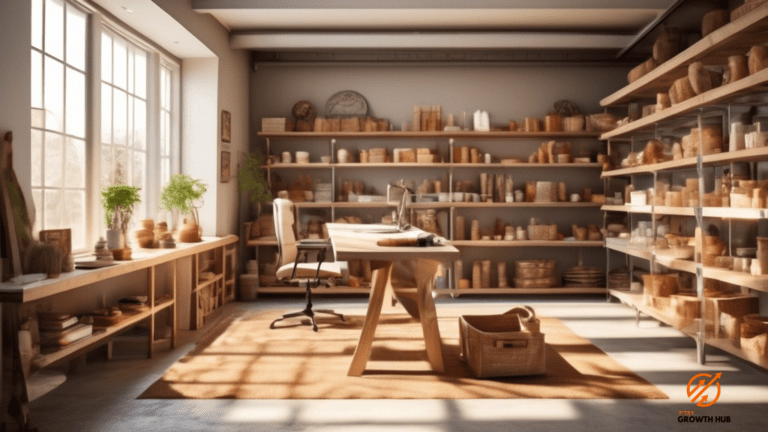Understanding Composition Rules In Product Photography
by Kevin Fairbanks · February 19, 2024
Learn how to master composition in product photography with these essential rules and techniques. Elevate your photos and captivate your audience with stunning visuals. Click here to level up your skills now!
Are you interested in taking your product photography to the next level? Understanding the composition rules in product photography can make a significant difference in the quality and impact of your images. By applying these rules, you can create captivating and visually appealing photographs that will capture the attention of viewers.
In this article, we will explore five essential composition rules: the Rule of Thirds, Leading Lines, Symmetry and Patterns, Depth and Perspective, and Negative Space. By familiarizing yourself with these rules and learning how to apply them effectively, you will be able to create stunning product photographs that stand out from the crowd.
When it comes to composition in product photography, the Rule of Thirds is a fundamental principle to keep in mind. By dividing your frame into a grid of nine equal sections, with two horizontal and two vertical lines, you can position your subject at the intersection points or along the lines. This technique creates a sense of balance and visual interest, making your photograph more captivating.
Additionally, Leading Lines can guide the viewer’s eye and create a sense of depth and movement in your images. By incorporating elements such as roads, fences, or even the product itself, you can direct the viewer’s attention towards the main subject, making it the focal point of the photograph.
By understanding and applying these composition rules, you can elevate your product photography to a whole new level of professionalism and creativity.
Key Takeaways
- Enhance the quality and impact of images.
- Use the Rule of Thirds to position the subject for balance and visual interest.
- Utilize leading lines to guide the viewer’s eye and create depth and movement.
- Create visual harmony through symmetry and patterns, either through alignment of subjects or repetition of shapes and colors.
Rule of Thirds: Balancing Your Subject
Now that you understand the basics of composition in product photography, let’s discuss the rule of thirds and how it can help you create a visually balanced image that draws the viewer’s eye to your subject like a magnet.
The rule of thirds is a simple yet effective guideline that divides your image into nine equal sections by placing two horizontal and two vertical lines. By aligning your subject along these lines or at their intersections, you can create a sense of balance and visual interest in your composition.
When applying the rule of thirds, imagine placing a tic-tac-toe grid over your image. Instead of centering your subject in the middle of the frame, try positioning it along one of the lines or at one of the intersections. This off-center placement adds a dynamic element to your composition and creates a more visually pleasing image.
For example, if you’re photographing a product, you could position it at the intersection of the left vertical line and the bottom horizontal line. This not only draws attention to your subject but also creates a sense of movement and flow within the frame.
Remember, the rule of thirds is not a strict rule that must be followed at all times. It’s more of a guideline that can help you create visually balanced and interesting compositions. Experiment with different placements and see what works best for your subject and the story you want to tell with your photograph.
By understanding and applying the rule of thirds, you can elevate your product photography and captivate your viewers with compelling and well-composed images.
Leading Lines: Guiding the Viewer’s Eye
Imagine yourself as the viewer, being drawn in by the captivating leading lines that guide your eye through the product photograph. As you gaze at the image, you can’t help but follow the lines that effortlessly lead you towards the main subject.
The leading lines in product photography are powerful compositional tools that not only add visual interest but also direct your attention to the intended focal point. These lines can take various forms, such as roads, fences, or even the curves of a product itself. They serve to create a sense of depth and dimension, pulling you into the scene and making you feel a part of it.
The leading lines act as a visual pathway, leading your eye from one point to another, encouraging you to explore the entire frame. By strategically placing these lines, the photographer can control the viewer’s perception and guide their gaze towards the most important elements within the image.
In conclusion, leading lines play a crucial role in product photography by guiding the viewer’s eye and creating a sense of visual flow. They draw you in, captivating your attention and leading you towards the main subject. As a viewer, you can appreciate the skill and intention behind the placement of these lines, as they enhance the overall composition and make the product photograph more engaging and visually appealing.
So next time you come across a product photograph with captivating leading lines, take a moment to appreciate the thoughtfulness and skill that went into creating such a captivating image.
Symmetry and Patterns: Creating Visual Harmony
By incorporating symmetry and patterns into your photographs, you can create a visually harmonious composition that captivates the viewer. For example, imagine a shot of a row of colorful macarons lined up symmetrically, enticing the audience with their vibrant colors and perfect alignment. The repetition of shapes and colors in a symmetrical arrangement creates a sense of balance and order, which is pleasing to the eye. Symmetry can be achieved by placing the subject in the center of the frame or by using reflections to create a mirror effect. Patterns, on the other hand, can be found in various elements such as textures, shapes, or colors. By highlighting these patterns in your product photography, you can create a sense of rhythm and repetition that adds visual interest to the composition.
To demonstrate the power of symmetry and patterns in product photography, consider the following table:
| Product 1 | Product 2 | Product 3 | Product 4 | Product 5 |
|---|---|---|---|---|
 |
 |
 |
 |
 |
In this table, each product is showcased in a symmetrical and patterned arrangement. The repetition of the products in a symmetrical layout creates a sense of harmony and balance, while the patterns in each product add visual interest and texture. This composition technique not only makes the products visually appealing but also creates a cohesive and unified look for your product photography. By incorporating symmetry and patterns into your compositions, you can elevate your product photography and create visually captivating images that leave a lasting impression on your audience.
Depth and Perspective: Adding Dimension to Your Shots
To create captivating product images, enhance the depth and perspective of your shots with careful attention to dimensional elements. By incorporating depth and perspective, you can add a sense of realism and dimension to your product photography.
One way to achieve this is by using props or backgrounds that create a sense of depth. For example, you can place objects in the foreground, middle ground, and background to create layers and give your image more depth. This can be achieved by using different sized objects or placing them at varying distances from the camera.
Additionally, you can experiment with different angles and perspectives to create a sense of depth. Try shooting from a low angle or from above to change the viewer’s perspective and add more dimension to your shots.
Another technique to enhance depth and perspective is by using leading lines. Leading lines are lines within your frame that guide the viewer’s eye towards the main subject. By incorporating leading lines into your product photography, you can create a sense of depth and draw attention to the product. These lines can be created by using diagonals, curves, or converging lines.
For example, you can use a diagonal tablecloth or a curving road to lead the viewer’s eye towards the product. This not only adds depth to your images but also creates a sense of movement and dynamism.
Overall, by paying attention to dimensional elements such as props, angles, and leading lines, you can add depth and perspective to your product shots, making them more visually appealing and captivating.
Negative Space: Emphasizing Your Subject
Highlight your subject by leaving ample empty space around it, creating a visual breathing room that draws the viewer’s attention. Negative space refers to the empty areas in a photograph that surround and enhance the main subject.
By intentionally leaving empty space around your subject, you can create a sense of balance and harmony in your composition. This technique allows the viewer’s eyes to focus solely on the subject, without any distractions. The negative space provides a visual break and emphasizes the importance of the subject, making it stand out and capturing the viewer’s attention.
In product photography, negative space can be particularly effective in highlighting the details and features of the product. By giving the product room to breathe, you allow it to take center stage and become the focal point of the image.
This can be achieved by positioning the subject off-center and leaving a significant amount of empty space on one side. The negative space not only draws attention to the subject, but it also adds a sense of elegance and sophistication to the overall composition. Remember, less is often more when it comes to negative space. Keep the surrounding areas simple and clutter-free to ensure that the focus remains on the product itself.
Frequently Asked Questions
How can I effectively use the rule of thirds to create a visually appealing composition in product photography?
To effectively use the rule of thirds in product photography, position the main subject along the lines or at the intersection points. This creates a visually appealing composition by adding balance and interest to the image.
What are some common leading lines used in product photography to guide the viewer’s eye towards the subject?
Some common leading lines used in product photography to guide the viewer’s eye towards the subject are diagonal lines, converging lines, curved lines, and horizontal or vertical lines.
How can I incorporate symmetry and patterns in my product photography to create a sense of visual harmony?
To create visual harmony in your product photography, incorporate symmetry and patterns. By juxtaposing these elements, you can create a sense of balance and order that pleases the viewer’s eye.
What techniques can I use to add depth and perspective to my product shots, making them more engaging for the viewer?
To add depth and perspective to your product shots, try using leading lines, such as diagonal or converging lines, to draw the viewer’s eye into the photo. Additionally, experimenting with different angles and viewpoints can create a sense of depth and make your images more engaging.
How can I effectively utilize negative space in product photography to emphasize the main subject and create a more impactful composition?
To effectively utilize negative space in product photography, position your main subject off-center and leave empty space around it. This will draw attention to the subject and create a more impactful composition.
Last Updated: January 22, 2024
Disclosure: We may receive affiliate compensation for some of the links in this article at no additional cost to you if you decide to purchase a product. You can read our affiliate disclosure in our privacy policy.
Kevin Fairbanks is your expert navigator in the world of Etsy business. With a passion for creativity and a deep understanding of the e-commerce landscape, Kevin brings a wealth of knowledge to aspiring and established Etsy sellers alike.
As a seasoned entrepreneur and successful owner of multiple Etsy shops, Kevin knows firsthand the challenges and triumphs of the Etsy marketplace. His journey is one of innovation, perseverance, and a keen eye for market trends, making him an invaluable guide for anyone looking to succeed on Etsy.
Kevin’s expertise extends beyond just shop management; he is adept in areas such as SEO optimization, effective marketing strategies, and financial planning for online businesses. His insights are grounded in real-world experience, offering practical and actionable advice.
Join Kevin as he shares his journey and expertise on Etsy Growth Hub. Whether you’re starting your first Etsy shop or looking to expand your existing business, Kevin’s guidance is designed to help you navigate the complexities of Etsy selling with confidence and creativity.
Stay tuned with Kevin’s latest strategies and tips on Etsy Growth Hub to transform your passion into a thriving online business. His dedication to empowering Etsy sellers is evident in every piece of advice he shares, helping you turn your Etsy dreams into reality.
Verified and Approved by:

Kevin Fairbanks
Head of SEO
Like This Article?
Share with your friends
Table of Contents
Latest Articles
Keep Reading
-
Wholesale Pricing Strategies For Your Handmade Products
Maximize your profits with effective wholesale pricing strategies for your handmade products. Attract buyers and boost your business today by learning the secrets to successful pricing. Click now and take your business to the next level!
-
Navigating Legal Compliance As An Etsy Seller
Stay legal and successful on Etsy with our guide to navigating legal compliance. From taxes to copyrights, we’ve got you covered. Don’t miss out! Click now and start selling legally on Etsy today.
-
Powerful Strategies For Customer Engagement
Learn the most effective customer engagement strategies that will revolutionize your business growth. Click now to captivate your audience and drive success with powerful techniques.




